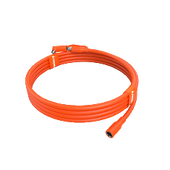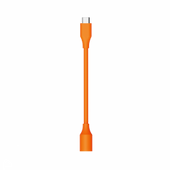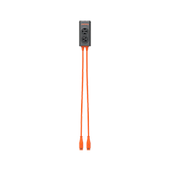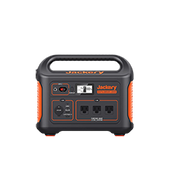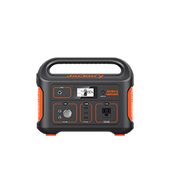What Is PD Charging
Charging your devices faster has never been easier, thanks to USB Power Delivery (PD) charging technology. It is one of the fast-charging methods implemented in all USB-powered gadgets. This fast-charging solution has revolutionized the charging game, providing a more robust and efficient charging experience. But what is PD charging, and how does it differ from other charging solutions?
The USB Power Delivery charging solution supplies high power, ensuring your devices receive more power in less time. The best part about the PD charging technology is that it is not limited to smartphones and tablets; it can even charge power-hungry gadgets like laptops. Jackery Explorer Portable Power Stations feature USB PD charging to power gadgets faster.
|
Jackery Explorer 3000 Pro Power Station |
 |
|
- USB-C Ports: 2x USB-C Output: 100W Max, 5V⎓3A, 9V⎓3A, 12V⎓3A, 15V⎓3A, 20V⎓5A - USB-A Ports: 2x USB-A Output: Quick Charge 3.0, 18W Max, 5-6V⎓3A, 6-9V⎓2A, 9-12V⎓1.5A - Total AC Output: 3000W Max, 6000W surge peak |
|
|
Jackery Explorer 2000 Pro Power Station |
 |
|
- USB-C Ports: 100W Max, (5V, 9V, 12V, 15V, 20V up to 5A) - USB-A Ports: Quick Charge 3.0, 18W Max - Total AC Output: 120V, 60Hz, 2200W (4400W Peak) |
|
|
Jackery Explorer 1500 Pro Power Station |
 |
|
- USB-C Ports: 100W Max, (5V, 9V, 12V, 15V, 20V up to 5A) - USB-A Ports: Quick Charge 3.0, 18W Max - Dual PD100W design |
What Is PD Charging?
USB Power Delivery is commonly used to fast-charge gadgets, but “What is PD charging” remains a question. The PD charging technology ensures devices take more power in a short amount of time, translating to superfast charging.
USB refers to “Universal Serial Bus,” and the PD refers to “Power Delivery.” The goal of PD charging is to power devices faster than traditional USBs. It generally features a USB-C format currently used in modern-day devices.
Below we reveal the key features of the PD charging solution:
- There is no fixed power direction, meaning the product with power (host or peripheral) can share power with other devices.
- Adjustable voltage supply mode enables devices to request voltages between 15V and the maximum fixed charger voltage available.
- New 28V, 36V, and 48V fixed voltages deliver a power level of 140W, 180W, and 240W, respectively.
- Each gadget takes only the required power by optimizing power management across multiple peripherals.
Compared to traditional USBs, there are many benefits of PD charging. One of the primary benefits is that the PD ensures the devices are not overcharged and only offers the necessary power.
How Does A PD Charging Work?
PD charging technology works by increasing the power delivered to the device in a specific time. Let’s take an example to understand — what is a PD charging port, and how does it work?
Suppose you want to power a new iPhone that takes around 18W of power, and the standard charger that comes along delivers up to 5W. In this instance, you will have nearly 19% of the charge after 30 minutes. However, that’s not the case if you use a power station PD. A typical PD charging solution can deliver up to 18W power stream, charging your iPhone faster. In the same 30 minutes, you will have a 50% charge.

What Is PD Programmable Power Supply (PPS)?
The PD Programmable Power Supply supports minor stepwise alterations in current and voltage. The core purpose of the feature is to reduce conversion loss during charging.
For instance, a lithium-ion battery is generally charged using constant current charging, which is then switched to constant voltage charging. However, the voltage difference between the battery terminal and the supply side can lead to the loss of unnecessary heat.
PPS charging works by reducing the energy loss in the form of heat by enabling the supply side to make stepwise changes in voltage and current.

Versions Of PD Charging
Since its inception, the USB PD technology has come a long way, with multiple versions available.
USB PD 1.0
USB PD 1.0 is the most basic version of the modern USB, launched in 2012. It allowed power delivery of up to 100W over a single USB cable. It has a USB connector shape with minor differences in the internal wiring.
|
USB PD 1.0 |
||||
|
Profile |
Voltage |
Current |
Power |
Supported appliances |
|
1 |
5V |
2A |
10W |
Smartphones, hard drives, and small accessories. |
|
2 |
12V |
1.5A |
18W |
Smartphones, tablets, and large accessories. |
|
3 |
12V |
3A |
36W |
Notebooks, displays, hubs, and future smartphones. |
|
4 |
20V |
3A |
60W |
Larger notebooks, docking stations, and hubs. |
|
5 |
20V |
3A |
100W |
Hubs, workstations, and external graphic cards. |
USB PD 2.0
In 2014, the USB PD 2.0 was launched, which favored more flexible power rules. It required the use of USB Type-C connectors and multiple normative voltages and currents. Hence, USB PD 2.0 offered smooth power usage and delivery among devices.
USB PD 3.0
Now let us understand what is PD 3.0 charging and why it is preferred. Released in 2015, USB PD 3.0 allowed the advanced use of Type C power functionalities and capabilities. An essential feature of USB PD 3.0 is role swapping.
If you are charging your laptop using an external battery, a USB Type-C charger can allow the devices to swap roles as long as power conditions are met. That means your computer can become the power provider rather than the consumer without you having to rotate the cables.
|
USB PD 2.0/3.0 |
||||
|
Profile |
Voltage |
Current |
Power |
Supported appliances |
|
1 |
5V |
0.1 - 3.0A |
10W |
Headphones and small accessories. |
|
2 |
9V |
1.67 - 3.0A |
15 - 27W |
Smartphones, cameras, and drones. |
|
3 |
15V |
1.8 - 3.0A |
27 - 45W |
Tablets and small laptops. |
|
4 |
20V |
3.0 - 5.0A |
45 - 100W |
Displays and large laptops. |
Below is a quick overview of the power requirements of different appliances.

USB-C Vs. USB PD Charging
Now that you know the answer to what is PD charging, it’s vital to understand how it differs from USB-C.
USB-C is a type of connection that puts the universal in USB. They are symmetrical and oblong, meaning you can plug them in any way. In addition, the cables are bidirectional, so data and current can travel in either direction. It’s sleek enough to fit in thin devices, including smartphones but capable of charging larger devices like computers.
One important thing to note is that not all USB-C chargers are compatible with PD charging. Power Delivery can handle higher power, allowing you to charge various devices quickly. It starts at 5V and is configurable up to 20V. With the help of a standard USB-C cable, it can handle up to 60W.
Power Delivery (PD) Vs. Quick Charge (QC)
USB Power Delivery and Quick Charge are the two leading fast charging technologies available on the market. Before we dig deep into how they differ, let us understand the basic definition of QC and fast charging.
Fast charging means charging devices faster by speeding up the charging process and shortening the charging time within an acceptable load range. Quick Charge is the technology that provides fast charging and delivers more power/wattage to the connected device.
PD and QC provide fast charging, but they differ in various aspects, such as manufacturing, safety, compatibility, etc.
Manufacturing
USB PD was developed by the USB Implementers Forum (or IF). It is a conglomerate of tech companies that set standards for universal connections for electronic devices. You can find it in some latest iPhone models and Google Pixel Phones.
On the other hand, Qualcomm Quick Charge, developed by Qualcomm, was the first fast-charging standard in the mobile market. It provides more power to the devices and charges them faster than USB chargers.
Speed
There is a negligible difference in the speed of USB PD and QC. That’s why it’s vital to consider the device’s compatibility that needs to be charged. For instance, if you have a phone that supports USB PD, you’ll need a USB PD-compatible charger rather than a QC charger.
Safety
USB PD standards keep the devices safe as it features overvoltage, overtemperature, and overcurrent protection. The charger reduces the power supply and sends an alert whenever any conditions are detected. On the other hand, Quick Charge features Intelligent Thermal Balancing to prevent device overheating and ensure safety.
Compatibility
USB PD supports a wide range of gadgets, given that there is a USB-C power controller and USB-C connector. As a universal charger, compatible devices can share cables and charging adapters. On the other hand, the phones equipped with Qualcomm chipsets support QC charging.
Jackery Power Stations With PD Charging
Now that we have answered what is PD charging port, here are a few tips for choosing the best charger. First, you need to check the input power that your device requires and the number of ports. Then, evaluate the total power output of the charger. It will help you determine how many devices you can power simultaneously.
Jackery is the solar generator pioneer, offering robust and powerful solar panels and portable power stations. The multiple input and output USB ports and Quick Charge 3.0 allows you to charge numerous electrical devices. Jackery Explorer 3000 Pro, Explorer 2000 Pro and Explorer 1500 Pro Portable Power Stations deliver enormous power for all appliances.

Jackery Explorer 3000 Pro Power Station
The ultimate power solution has multiple ports, including 4*AC output (20A Max), 2*USB-A output (Quick Charge 3.0), 2*USB-C output, and 1*AC output (25A Max). It can supply a total AC output of 3000W to charge 99% of your home or outdoor devices. In addition, it features MPPT technology to ensure 99% solar charging efficiency and advanced IBC technology for maximum light absorption.
Jackery Explorer 2000 Pro Power Station
The first-rate lithium battery delivers enormous power to small and large appliances. It has multiple USB ports and an 18W Quick Charge 3.0 to power appliances faster. In addition, the Jackery Explorer 2000 Pro Portable Power Station has BMS technology to protect it from overvoltage and short circuits.
Jackery Explorer 1500 Pro Power Station
Jackery Explorer 1500 Pro Power Station is incredibly powerful and durable. The immense power solution can charge around 8 devices using a Dual PD 100W design, two USB-C charging ports, three 1800W AC charging ports, and one car charger. In addition, the multiple output ports can help you supply continuous and stable power to appliances during off-grid living, power outages, etc.
Jackery Explorer 1000 Pro Power Station
Jackery Explorer 1000 Pro Portable Power Station features a pure sine wave inverter for a stable power supply. It has dual 100W PD ports to fast-charge devices such as cameras, iPads, phones, and drones. In addition, the power station features 2*USB-A ports, 2*USB-C ports, 3*1000W AC ports, and DC output ports to power eight devices simultaneously.
|
Series |
Capacity |
Input Ports |
Output Ports |
Appliances |
|
Jackery Explorer 3000 Pro Portable Power Station |
70Ah/ 43.2V DC(3024Wh) |
AC Input: 120V, 60Hz, 15A Max DC Input: 2x DC 8mm Ports: 11-17.5V (Working Voltage)⎓8A Max, Double to 8A Max; 17.5-60V (Working Voltage)⎓12A, Double to 24A/1400W Max |
4x AC Output: 120V~ 60Hz 20A Max 1x AC Output: 120V~ 60Hz 25A Max 2x USB-C Output: 100W Max, 5V⎓3A, 9V⎓3A, 12V⎓3A, 15V⎓3A, 20V⎓5A 2x USB-A Output: Quick Charge 3.0, 18W Max, 5-6V⎓3A, 6-9V⎓2A, 9-12V⎓1.5A Car Port: 12V,10A Max |
Can charge 99% of most home appliances. |
|
Jackery Explorer 2000 Pro Portable Power Station |
2160Wh (43.2V 50Ah) |
AC Input: 120V, 60Hz, 15A Max DC Input: 11V-17.5V, 8A Max, Double to 8A Max 17.5V-60V, 12A, Double to 24A/1400W Max |
AC Output: 120V, 60Hz, 2200W (4400W Peak) USB-A Output: Quick Charge 3.0, 18W Max USB-C Output: 100W Max, (5V, 9V, 12V, 15V, 20V up to 5A) Car Output: 12V, 10A |
Can charge 96% of most home appliances. |
|
Jackery Explorer 1500 Pro Portable Power Station |
1512Wh (35A 43.2Ah) |
AC Input: 120V, 60Hz, 15A Max DC Input: 11V-17.5V, 8A Max, Double to 8A Max 17.5V-60V, 12A, Double to 24A/1400W Max |
AC Output: 120V, 60Hz, 15A, 1800W (3600W Peak) USB-A Output: Quick Charge 3.0, 18W Max USB-C Output: 100W Max, (5V, 9V, 12V, 15V, 20V up to 5A) Car Output: 12V, 10A |
Can charge 95% of most home appliances. |
|
Jackery Explorer 1000 Pro Portable Power Station |
1002Wh (43.2V 23.2Ah) |
AC Input: 120V, 60Hz, 15A Max DC Input: 12V-17.5V(Working Voltage)⎓8A Max, Double to 16A Max; 17.5V-60V (Working Voltage)⎓11A, Double to 22A/800W Max |
AC Output: 120V, 60Hz, 1000W (2000W Peak) USB-A Output: Quick Charge 3.0, 18W Max USB-C Output: 100W Max, (5V, 9V, 12V, 15V, 20V up to 5A) Car Output: 12V, 10A |
Can charge 93% of most home appliances. |
PD Charging FAQs
Is PD the same as USB-C?
In a word, no. While USB PD can operate with a USB-C connection, the vice versa is not possible. This is because not all USB-C chargers are compatible with PD charging. Another difference between the two is that the USB-C charger is faster compared to PD 3.0.
How do you know if my charger is PD or not?
The easiest way to determine whether the charger is PD is by analyzing its features.
- The port has to be a USB-C connector, which differs from older USB versions.
- The corners should be rounded compared to the right-angled ones on USB-A connectors.
Is PD charging safe?
Yes, the PD charging technology is relatively safe and delivers precisely the right amount of power. The main advantage of PD charging is that it analyzes the device’s power requirements and figures out how to charge it quickly without damaging it.
Final Thoughts
Many often ask, “What is PD charging, and why is it preferable?” The reason behind choosing USB-C PD over standard wall chargers is that it supplies an incredible amount of power and charge devices fast. For example, the PD charging technology can charge smartphones and tablets up to 70% faster than a standard USB charger supplying 5W power.
Before choosing any type of charger, it’s vital to understand the power requirements of your home or outdoor devices. If you are perplexed about which charging solution can fit your needs, consider investing in Jackery power stations. Equipped with Quick Charge 3.0, Dual PD charging ports, and USB ports, Jackery Explorer Portable Power Stations can charge a wide range of appliances much faster.
Disclaimer:
The runtime mentioned for appliances powered by Jackery is for reference only. Actual runtime may vary under different conditions. Please refer to real-world performance for accurate results.









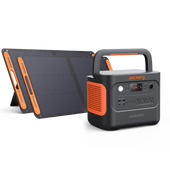

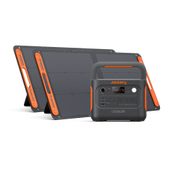
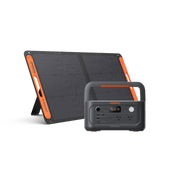
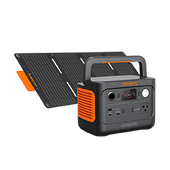


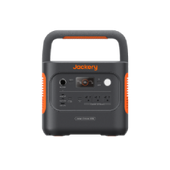
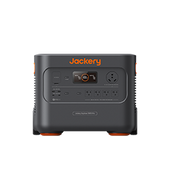
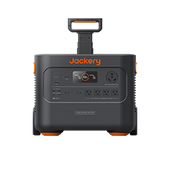

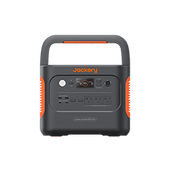
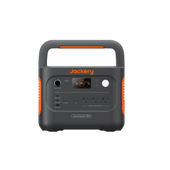
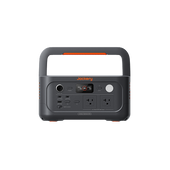

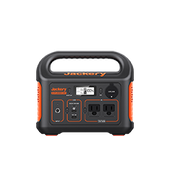
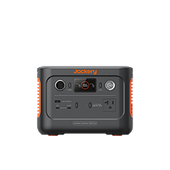

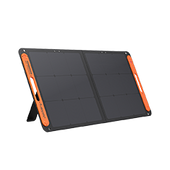

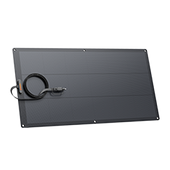
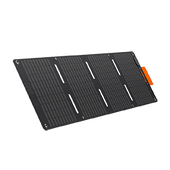
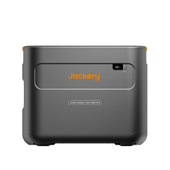
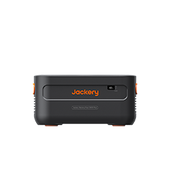
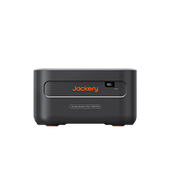
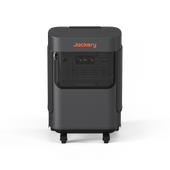



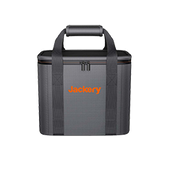
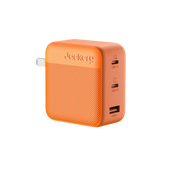
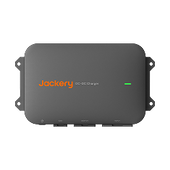
![[Add-on] Jackery Manual Transfer Switch for Explorer 5000 Plus](http://ca.jackery.com/cdn/shop/files/add-on-jackery-manual-transfer-switch-for-5000-plus-240V.webp?v=1757043692&width=170)
